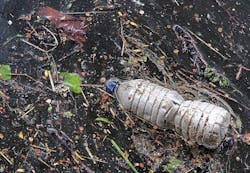EPA Successfully Progressing Through Superfund Cleanup Sites
On Jan. 2, the U.S. Environmental Protection Agency (EPA) announced “significant improvement” in its progress towards cleaning the nation’s most contaminated areas, successfully removing seven Superfund sites from the National Priorities List (NPL), more than triple what was achieved in 2016.
According to EPA Administrator Scott Pruitt, it is the priority of EPA execute the cleaning of these sites faster while still doing the work properly. The difference in deletion from 2016 to 2017 is reflective of this prioritization of acceleration.
“We have made it a priority to get these sites cleaned up faster and in the right way,” Pruitt said. “By creating a streamlined task force and making major remedy decisions that hold potentially responsible parties accountable for clean up, the Superfund program is carrying out the Agency’s mission of protecting human health and the environment more every day.”
Of the seven sites which underwent deletion procedures throughout 2017, three were removed entirely, while four saw portions removed.
Deletion of sites from the Superfund list occurs when all of the fixes have been thoroughly and properly implemented and no further interference in the site is necessary to ensure human or environmental health.
The three sites completely deleted from the NPL include:
- Nutting Truck & Caster Co. in Minnesota, which was contaminated with trichloroethylene (TCE) in the site’s groundwater;
- Shpack Landfill in Massachusetts, which had contaminated soil, sediment and groundwater; and,
- Perdido Ground Water Contamination in Alabama, which was contaminated with benzene.
Partial site deletions include:
- Mystery Bridge Rd/U.S. Highway 20 in Wyoming, which suffered from a groundwater plume, as well as soil containing benzene, toluene, ethylbenzene, and total xylenes;
- Ellisville Site in Missouri, a site which contained drums of hazardous materials;
- Omaha Lead in Nebraska, which saw its surface soil contaminated by deposition of air emissions from lead smelting and refining operations; and,
- The North Penn - Area 6 in Pennsylvania, which contained soils and groundwater were contaminated with volatile organic compounds.
